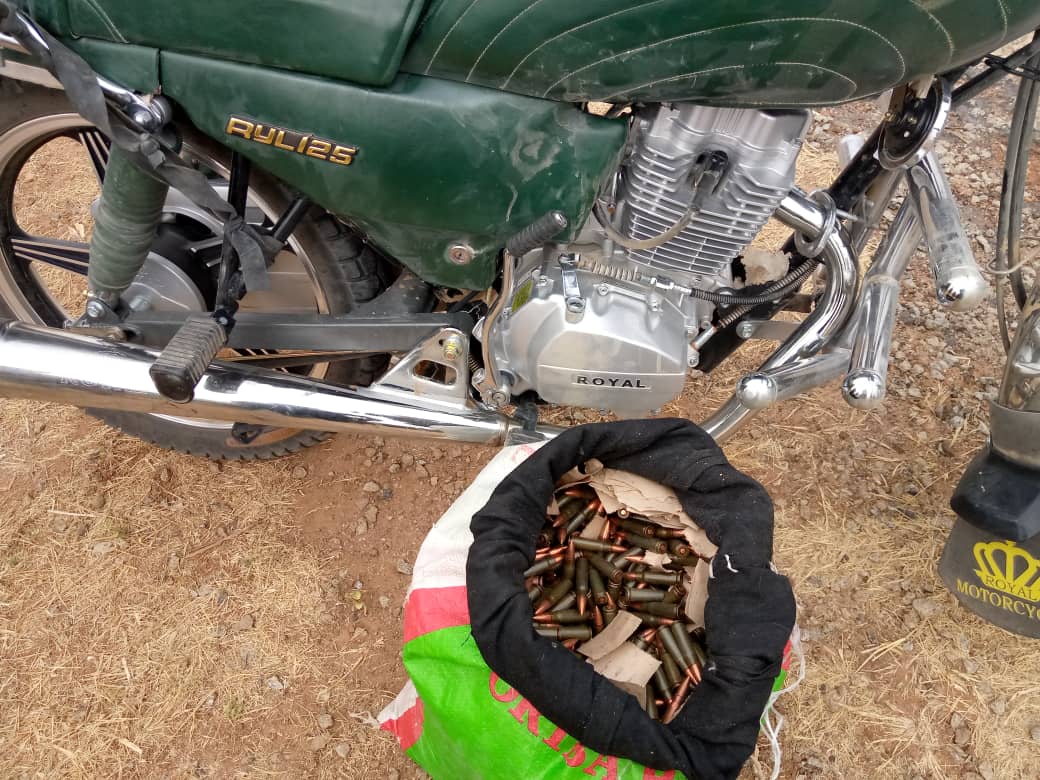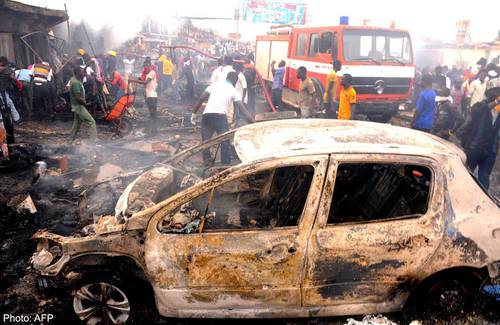The water rose so high that people in many such homes were advised to climb to their roofs rather than take refuge in attics, unless they had “an axe or means to break through”.
Heavy rains were predicted to linger for several days. The National Weather Service (NWS) issued a flash flood emergency warning and said “catastrophic flooding in the Houston metropolitan area is expected to worsen and could become historic”.
More than 6.5 million people live in the region.
Several deaths were reported as the rain worsened. Cars were abandoned as stranded residents tweeted rescue requests to Ed Gonzalez, the Harris County sheriff.
“We need help it’s like 12 adults and 10 toddlers,” one
Gonzalez reported on Twitter that a woman and child had died in a submerged vehicle on Interstate 10 – the deaths were unconfirmed, because the location was unreachable. Texas governor Greg Abbott told CBS on Sunday he was “not capable at this time of confirming” the number of fatalities caused by the hurricane.
In an indication of just how high water was rising in some neighbourhoods, local officials advised flooded residents to go on to their roofs and call for help if necessary, though 911 services were said to be at capacity before dawn.
“Have reports of people getting into attic to escape floodwater,” Houston police chief Art Acevedo tweeted. “Do not do so unless you have an ax or means to break through onto your roof.”
Among hundreds of rescues, police evacuated two apartment complexes in the Greenspoint neighbourhood, saving more than 50 children from rising water. The US coast guard reported more than 300 requests for urban search and rescue in the Houston area. Five coast guard helicopters were working and New Orleans was asked to send more.
At a Sunday press conference, Houston mayor Sylvester Turner said more than 2,000 emergency calls had been received and more shelters, which he called “lily pads”, would be opening.
Turner defended his decision not to call for an evacuation ahead of the flooding, citing likely traffic gridlock: “If you think the situation right now is bad and you give an order to evacuate, you are creating a nightmare.”
The NWS said on Sunday morning that the Houston area had received 24.1in of measured rain in a 24-hour period, sending water levels soaring in the network of bayous that meander through the core of the city. Some areas were expected to receive as much as 7in of rain in an hour.
Speaking to CBS, Donald Trump’s homeland security and counterterrorism adviser, Tom Bossert, said: “We’re going to see continued rain, upwards of 30in. I don’t think people understand what 30in of rain [is]. I certainly … don’t understand. I’ve been around dozens and dozens of major disasters and hurricanes, hundreds of disasters. I’ve never seen 30in of rain.”
Later, NWS meteorologist Patrick Burke said rainfall totals would end up around 40in or more for Houston on average, but some isolated spots would hit or exceed 50in, or more than 4ft. That would exceed all Texas rainfall records.
Abbott told CNN: “Obviously there will be rain that will continue to come down, those bayous will continue to rise, those rescue missions will continue. Do not get out on to the road, make a plan where you can elevate in your own home or find a place of safety.”
Abbott said he had asked Trump to add Harris County, which covers Houston, to the federal disaster declaration which was signed on Friday, releasing funds.
The president was tweeting his thoughts from Camp David. He would visit Texas, he wrote, “as soon as that trip can be made without causing disruption. The focus must be life and safety.”
Harvey made landfall on the Texas coast on Friday night as a Category 4 hurricane with 130mph winds, the most powerful to hit the US since 2004, and wrought destruction on Corpus Christi and the small towns of Rockport and Port Aransas. At least one person died in Rockport and more than 300,000 lost power.
Harvey rapidly weakened to a Category 1, then tropical storm status. But rotating bands of rain began to pummel the Houston area, some 200 miles north-east. In a place famous for its lack of building zone regulations, thousands of homes are located in floodplains and next to bayous and creeks. The area is also home to vast oil refineries, potentially sources of serious pollution.
The NWS issued 37 tornado warnings for Houston on Saturday and 35 on Friday. Small tornadoes damaged structures. More tornado warnings came early on Sunday. But water was clearly the primary threat.
Houston is one of the country’s most flood-prone cities and endured severe storms in the spring of 2015 and 2016 that caused loss of life and widespread damage. But Harvey’s longevity means its effects are likely to be even worse. Some suburban areas were under evacuation orders issued on Saturday.
“It’s a serious storm, it’s going to last four or five days,” Turner said on Saturday.
From his 13th-floor apartment near downtown, Damien Balais has an enviable view of parkland along both banks of the Buffalo Bayou. Not on Sunday.
“It’s basically a lake,” he told the Guardian. A cemetery had flooded. Highways were completely submerged. “Bridges across the bayou are nearly all covered,” he said, adding that the flood was “super-high”, a line of tree-tops poking out above muddy water.
“It’s still raining,” he added.







